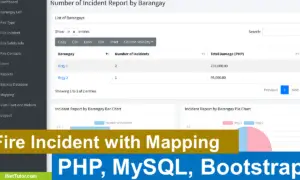Web Based Toll Management System for Bus Terminals
INTRODUCTION
This project on the technology required to support the collection of tools, especially the manual potential toll facilities. Somewhat recently, the most common approach for collecting tolls was to have the driver stop and pay a tool collector sitting in a tollbooth. The toll collector determines the amount to be paid by each vehicle based upon its characteristics or classification. Manual collection can accept cash, checks, or even leave it as a credit/debit.
The appropriate combination of technology and operational procedures is needed to meet the functional requirements of the emerging tolling program. Furthermore, the combination also must provide a path for migration a single facility to multiple facilities, and be able to evolve along with changes in technology.
The toll must be determined, and the fees clearly conveyed to the user. Traditionally, tolls are fixed amount based upon vehicle characteristics such as number of axles. Tolls can be assessed at a point on a road, or based upon the distance traveled. Advancing in the conditions monitoring not allow toll rates to vary based on the level of congestion. In its basic form, a vehicle passing through a toll collection point has identification device, especially, the barcode scanner. Toll collection can involve a direct cash transfer at a toll booth. Other way, it is necessary to insure the correct toll is collected, and that user and collector fraud is discouraged.
Project Context
Our city is soon going to have one of the country’s most extensive Bus terminal networks through various phases of the Bus Terminal Development Project planned by the Government. This project is being financed largely through subscriber fees collected from subscribers at tool points improved bus terminals.
As the volume of the traffic increases, the current method on manual toll collection, with or without using computer generated receipts, becomes inefficient, prone to leakage and difficult to sustain. With an aim to plan for implementing bus terminal toll management system and will recommend the most suitable technology for this local condition. The system will enable the user to avoid delay.
Purpose and Description
The terminal is new to the city so it does not use any system and is currently not using any technology. It only uses paper, log books and pen to record the information of the vehicle. The problem with the terminal that has no system is that the records can be misplaced because it is only recorded on log books. Also, the terminal does not have the records of the plate numbers of the vehicles that enters the said establishment. Information can be manipulated due to unsecured method that is being done through pen and paper only. Logbooks are not that secured for it could be misplaced or damaged because it is a concrete document.
The toll management system will be develop to help terminal management in their operation to be made smoother. It is a technology that allows for electronic payment of tolls. And with the help of this system can determine whether a passing car is registered, automatically charging those vehicles, and alert the local highway patrol about the passers that not registered. However, not all toll ways users are equipped with the necessary on-board devices to enable the Bus Terminal Toll Management System.
The system feature the following Automatic Boom Barrier which will served as the barriers for the passing cars while paying for their toll. The camera, which will take a picture of the passing car, the barcode scanner which will scan the barcode of the car, to know the classification, and to determine if the car is registered. Traffic light which will signal the car to go or to stop. A LCD display is used here to give the output amount. Printer to print the receipt the hardware part of the system covers the whole electrical system and a hardware installation.
Objectives
General Objective
To monitor the movement of vehicles that goes in and out of the terminal and generates the daily, weekly, monthly and annual income. And to provide technology to terminal operators.
Specific Objectives
- To be familiar with the vehicle movement inside the terminal
- To track whether the vehicle route is city bound or out bound vehicle
- To determine the number of vehicles that enters the terminal
- To determine the toll fee that should be charged to the vehicle that enters the terminal.
- To generate a report by vehicle type
- To generate a report on vehicles by owner/company
- To help the government in reducing the number of unregistered cars.
- To give accurate data as well as saves the license vehicle to recognize unwanted vehicles.
Scope and Limitation
This research concentrates only on the manual technique of monitoring the daily income that the terminal has generated through the entry of each vehicle. Many circumstances have been considered by the group such as improper count of the daily income and wrong information of an individual vehicle. The focus of this research is on the public utility vehicles that enters the terminal.
The research of the group focused on the difficulties with regards on how the terminal generates its income every day. This system could count the number of vehicles that enters the terminal. In addition, it limits only on the monitoring of the movement inside the terminal such as the number of the vehicles entered the terminal on a specific date and the amount of toll fee generated by a specific employee.
Development Tools: PHP, MaridDB and Bootstrap
Credits to the authors
You may visit our Facebook page for more information, inquiries, and comments. Please subscribe also to our YouTube Channel to receive free capstone projects resources and computer programming tutorials.
Hire our team to do the project.


